For centuries, preserved meats provided essential nutrients to people in Hungary. Get to know the most popular kinds.

Be it air-drying, salting, smoking, or a combination thereof, preserving meat goes back to the beginning of human civilization. By extracting moisture from meat, people could protect it from bacteria and extend its shelf-life to last for the dreary winter months. Salt-curing also enhances the meat’s texture and taste: salt breaks down and softens muscle fibers, enzymes add flavor, and aging intensifies it. The first known ancient Roman cookbook, Apicius, already featured a recipe for smoked sausage.
With endless regional varieties — think coppa, pancetta, prosciutto, or lardo — Italy is the global capital of cured meats, but Hungary isn't far behind. Here, kolbász and szalonna are the two main categories, both of which people traditionally prepared during the annual winter pig slaughter.
Kolbász consists of a spice-heavy blend of meat and fat, while szalonna is an umbrella term for all cuts of preserved pork that come from right under the animal’s skin, be it fatback, belly, or jawl. Most szalonna is salted and smoked, but treatments vary by region (in unforested eastern Hungary, Alföld, people often forgo smoking). To this day, kolbász and szalonna are the main source of protein for many Hungarian people across the country.
When in Budapest, you'll be able to buy many of the below items at the Great Market Hall (feel free to ask for a sample first). For a surcharge, you can get them from Mangalitsa pork, the heritage Hungarian pig known for its curly fleece and marbled meat.
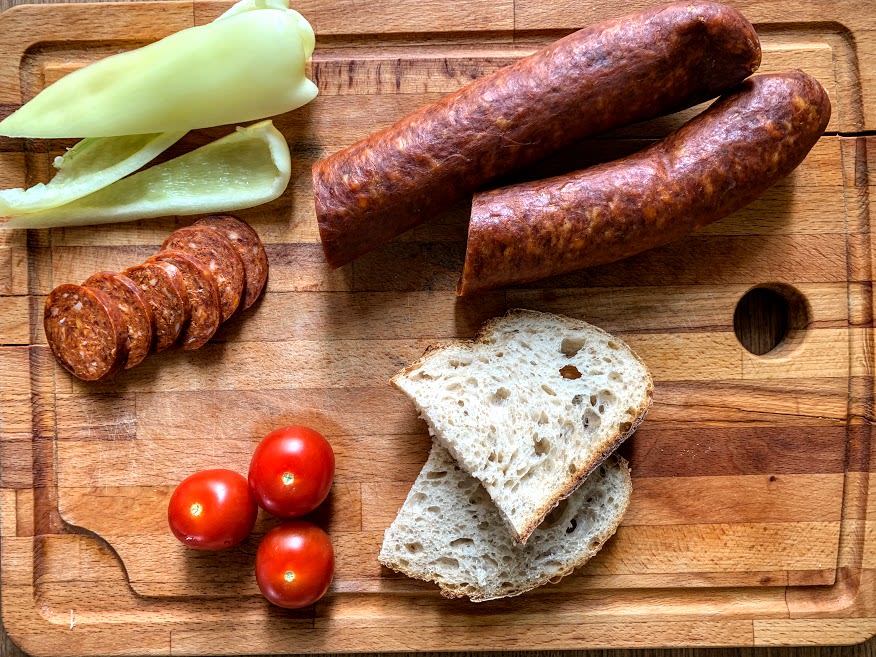
#1 - Kolbász (cured sausage): Made from a paste of meat, fat, and a paprika-heavy spice blend, kolbász is the most common type of preserved sausage in Hungary. The mixture is stuffed into a tubular casing — usually using the pig’s intestine — and then cold-smoked and dried for a couple of weeks. Kolbász options span regular (csemege), spicy (csípős), hard (száraz), and soft (félszáraz). High-quality kolbász producers use shoulder, leg, or pork belly meats and a 30 percent fat ratio. Sliced kolbász is highly versatile, appearing in Hungarian classics like layered potatoes (rakott krumpli) and also as sandwich toppings.

#2 - Szalámi: Traditional salami is a relatively recent type of preserved sausage in Hungary, dating back to the 19th century. Compared to kolbász, above, szalámi is thicker, aged longer, and usually made without paprika, hence the absence of an orange-red hue to it. A premium category is téliszalámi, recognizable by a white protective mold that grows on its surface during drying. Two historic companies, Pick and Herz, are still the main producers. Sliced szalámi works both as a snack and as a sandwich topping.

#3 - Sütőkolbász (roasted paprika sausage): This one is a fresh, unaged sausage made specifically to be roasted within a day or two. The sausage mixture contains the same ingredients as the kolbász above: meat, fat, and paprika-forward spices. In Hungary, many butcher shops serve roast sausages; paired with a slice of crusty bread, a dollop of mustard, and a side pickled vegetables, they make for a tasty and low-priced lunch meal.
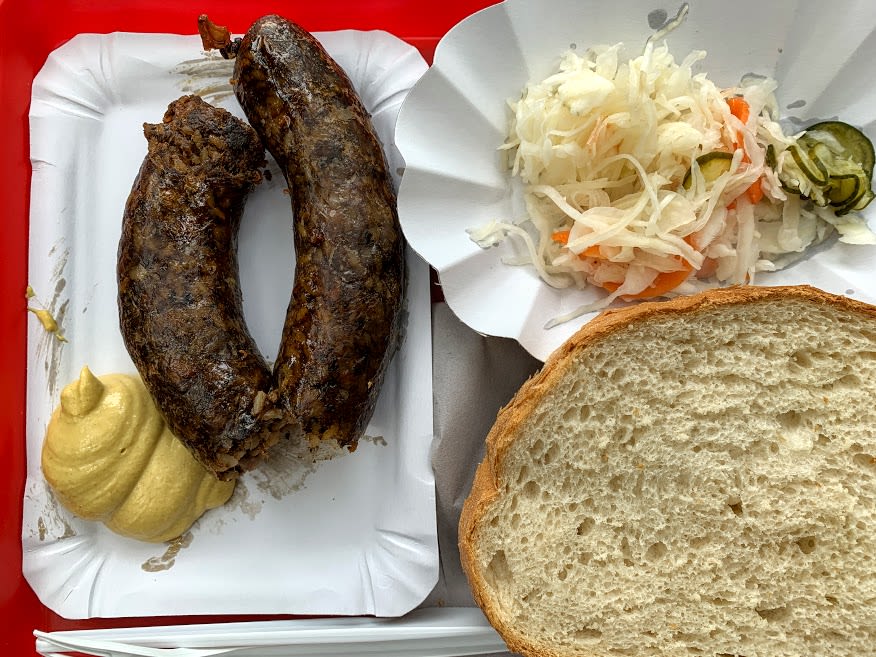
#4 - Hurka (roasted offal sausage): This freshly cooked and roasted offal sausage isn't for the faint of heart. Like kolbász, hurka was traditionally prepared during the annual pig slaughter in the Hungarian countryside where people made a fine paste of the animal’s cooked intestines — liver, lung, heart, blood. They added rice to mop up the juices and a seasoning blend of salt, pepper, and marjoram. Today, the two principal versions are liver (májas) and blood (véres) hurka, and many Hungarian butcher shops serve them ready-to-eat.
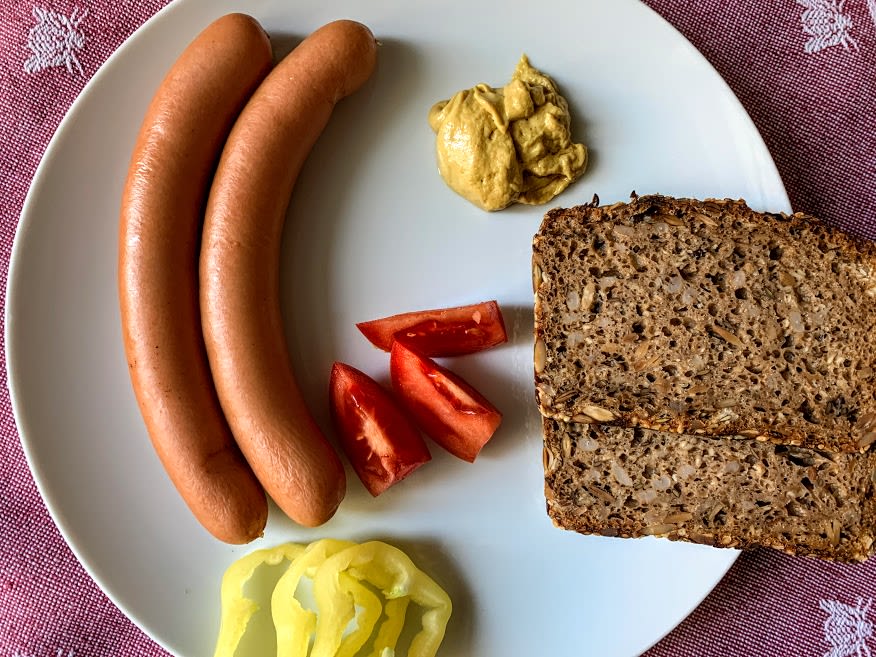
#5 - Virsli (frankfurter): Frankfurters spread to Hungary from neighboring Vienna in the 19th century and haven’t left since. Instead of appearing in hot dogs, these emulsified and smoked sausages tend to show up on the breakfast table accompanied by a slice of bread and a side of mustard, or atop vegetable stews (főzelék).
My content is free and independent. If you've enjoyed this article, please consider supporting me by making a one-time payment (PayPal, Venmo).
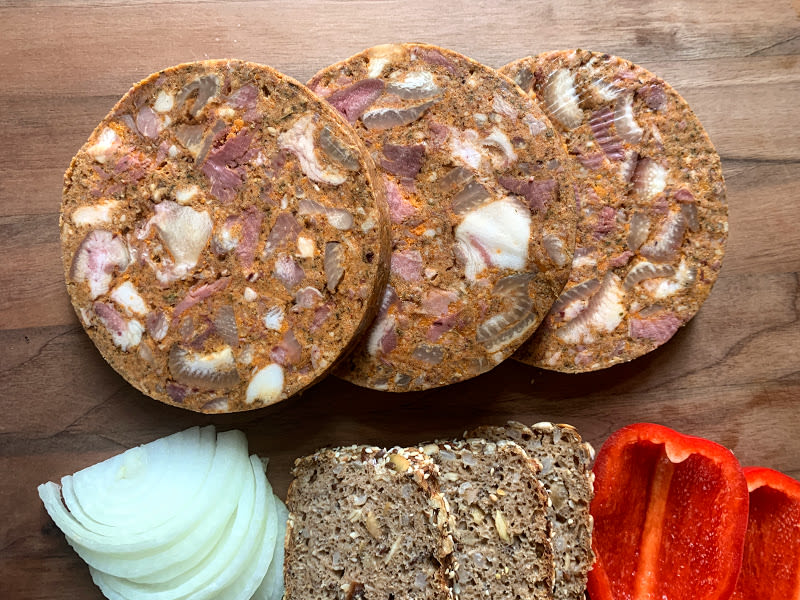
#6 - Disznósajt (head cheese): As with kolbász and hurka, the making of head cheese also harks back to the annual pig slaughter festivities. Here, people cook the pig’s head — flesh, tongue, ears, skin and all — with spices and stuff the blend into the pig’s cleaned stomach. This gelatinous mess is then pressed dry and smoked. Served cold and thinly sliced, disznósajt makes for a delicious snack.
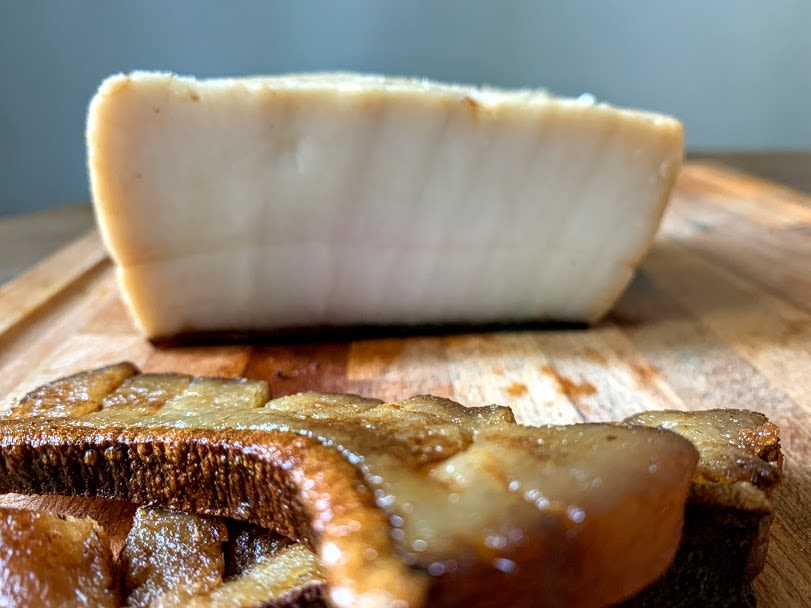
#7 - Csemege szalonna: The truly all-around szalonna in Hungary, prepared from salted and smoked fatback. This is what Hungarian people use for meat-roasting on a spit over fire (szalonnasütés), for cooking into soups like lebbencs leves, and for sprinkling over túrós csusza.
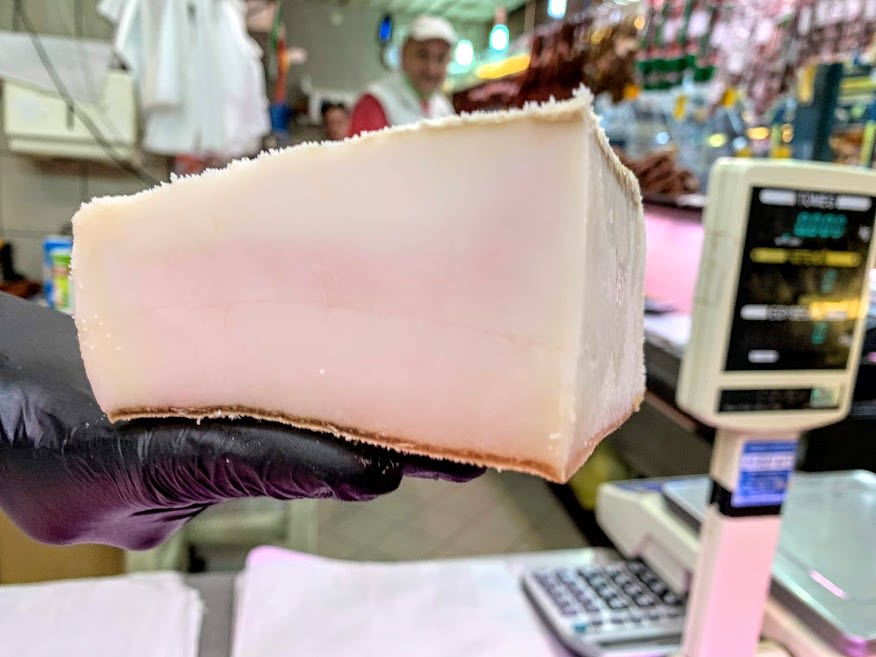
#8 - Sózott fehér szalonna (dry-cured szalonna): This snow-white slab of fatback comes closest to the Italian lardo — instead of being cooked or smoked, it’s simply cured for weeks in a bed of salt. People usually pair thin slices with a piece of bread. Beware, it’s salty.
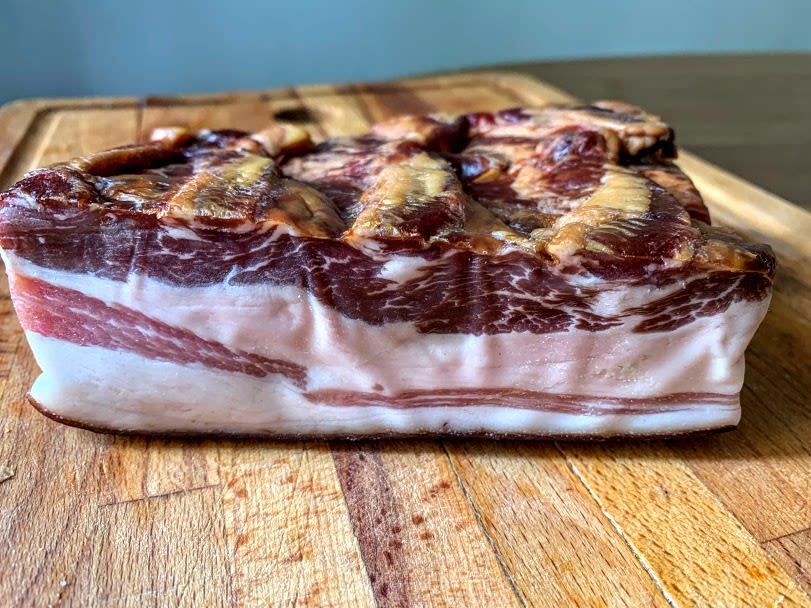
#9 - Kolozsvári szalonna: A salted and smoked — but not cooked — pork belly cut recognizable by its reddish-brown color and rugged surface that once contained the hog’s ribs. Kolozsvári szalonna exhibits a nice balance of meat and fat and it most often ends up being cooked into dishes like stuffed cabbage for a flavor boost.

#10 - Abált szalonna: Pork jowl or pork belly is first simmered in an aromatic broth, then gets a simple spice rub of paprika and garlic. For a true-to-Hungary experience, cut a few morsels, grab a slice of bread, and enjoy them with crunchy bell peppers and red onions.
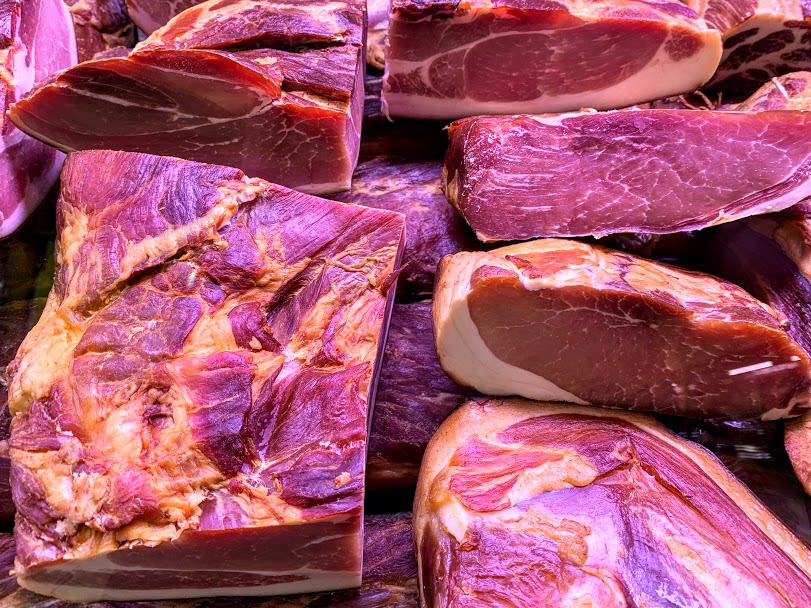
#11 - Sonka (ham): Hungary’s hams pale in comparison to those from Europe’s ham empires — Spain, Italy, Germany, and the Czech Republic. It’s also the case that Hungarian people eat little ham outside of the peak Easter-season. This may be surprising, since the Mangalitsa lends itself to high-quality hams; in fact, a Spanish company, Monte Nevado, imports a large number of raw Mangalitsa legs from Hungary and resells them as jamons after aging.

#12 - Töpörtyű & Pörc: Morsels of fatback fried to a golden, crispy brown may not be for everyone but they're delicious. Most butcher shops in Hungary make them from both pork and goose fat (schmaltz). Nibble at töpörtyű as they come or grab some red onions and a fresh slice of bread to pair. Pörc is a similar product, using pork belly instead of fatback (think chicharrón).
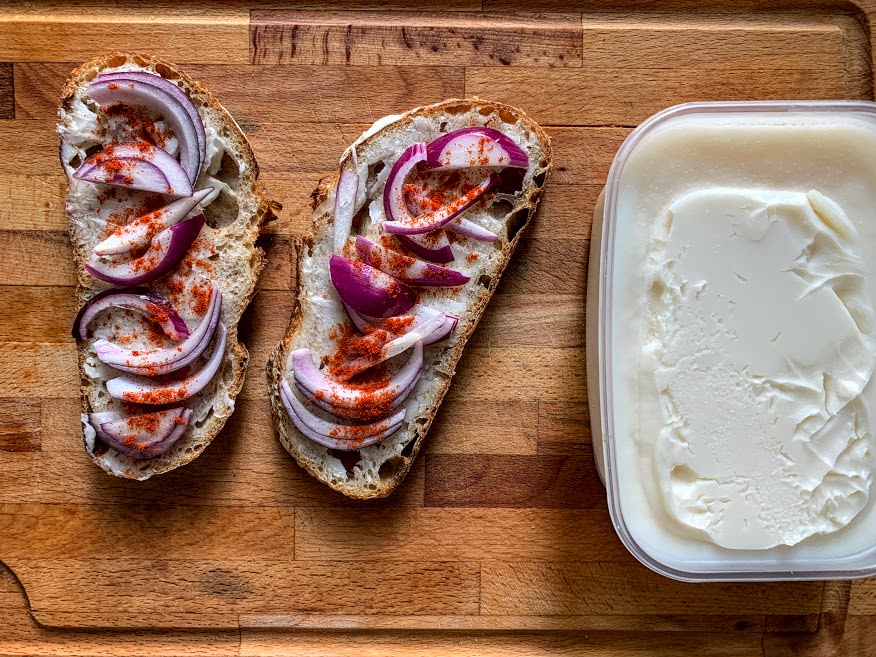
#13 - Zsíroskenyér (bread spread with lard): The tradition of spreading flavorful fat on crusty bread is alive and well in Hungary, too. While in northern Europe it’s butter, in Hungary creamy pork fat (lard) is the usual topping of choice. Sprinkled with rings of onion and a hint of paprika, the zsíroskenyér is a popular bar snack as it pairs well with draft beer and is also wallet friendly. A few places also serve a VIP version made with Mangalitsa lard.